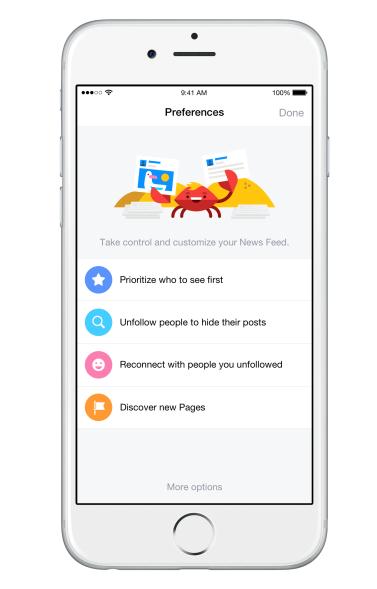Facebook’s latest news feed update has caused quite a stir – it’s 1.4billion users have been granted greater ‘control’ over what they’re seeing – but what exactly are the changes and what are the repercussions for businesses?
Why has the news feed update been introduced?
Facebook have introduced a number of updates with the aim of improving the social media platform, to make the user experience more meaningful. Recently, they have introduced changes which focus specifically on improving the news feed:
‘We’re always working to improve and personalize your News Feed experience. We know that ultimately you’re the only one who truly knows what is most meaningful to you and that is why we want to give you more ways to control what you see. Last year we announced some new ways to control what you see in News Feed. Today we are announcing even better tools for you to actively shape and improve the experience. We’ve redesigned and expanded Facebook’s News Feed Preferences to give you more control.’
Prior to this update, stories were ranked for the news feed according to the interests of a user – based on interactions and engagements. However, this update enables these calculated assumptions to be overwritten for a more tailored experience.
How can users gain greater control over their news feed?
Last year’s update focussed largely on editing the news feed – allowing users to quickly follow and unfollow pages/people, as well as giving feedback about the posts on their news feed more easily. In order to allow for greater personalisation and to improve the selection of relevant content, Facebook will now allow users to select preferences that determine what’s visible in their news feed.
This new update will allow users to prioritise the people and pages they wish to see at the top of their news feed. The process for this is very simple:
‘Within News Feed Preferences, tap on a friend’s profile picture to see their posts first. You will then see any new stories they’ve shared since your last visit to Facebook at the top of News Feed, with a star in the top right of their post so you know why they’re at the top. You can scroll down to see the rest of your News Feed normally.’
Users can also more easily discover new pages based on their existing likes, as well as selecting which friends and pages to follow or unfollow.
What are the repercussions for businesses?
This update follows the trend for declining organic visibility in Facebook since it is expected that more users will prioritise friends than business pages. This is therefore likely to impact organic results, pushing brands towards advertising through the social media platform:
“Chances are that people aren’t going to put brand pages at the top of their list and that is going to further reduce the likelihood that brand posts will be seen by people unless they pay for advertising. Human nature seems to indicate that you would pick your friends over companies.” – Debra Aho Williamson, an analyst for eMarketer*
However, the opportunity for further data collection could benefit businesses. In introducing this update, Facebook is able to gauge even more information about user preferences and behaviour; thus gaining the potential to improve targeting.
When will this change be introduced?
This update is already available on iOS and will be rolling out across Andriod and desktop over the coming weeks –we’ll be keeping a close eye on organic Facebook results by device over the coming weeks to monitor impact.
*http://www.toptechnews.com/article/index.php?story_id=030000XSBCNI







